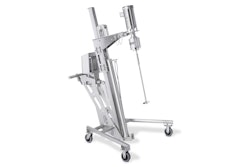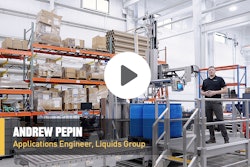Author - Elisabeth Cuneo, Contributing Editor, PMMI ProSource
Any slowdown on the line, whether upstream or downstream, can have a big impact on your throughput and production goals. When cartoning equipment fails at the end of the line, it can shut your whole line down. Don’t let this happen to you. Follow these steps to avoid common pitfalls and keep your cartoning equipment and packaging line up and running.
1. Assess the quality of your materials
When a problem occurs in cartoning equipment, it’s usually a materials problem. That’s why it’s a good idea to assess the quality of your carton material as well as the glue and glue nozzle you’re using for carton assembly and sealing. Whether it’s the carton or the glue, low quality materials increase the chance of loading jams that halt cartoning operations. Carton quality is a significant factor in consistent machine operations from forming cartons out of flat blanks to picking and opening folded cartons. As speeds increase and carton designs get more complex (i.e., adding windows or other features on the package), the quality of the cartons you use becomes even more critical. The same goes for the glue you decide to use; lower quality glue or inconsistent gluing on cartons can result in jams and slowdowns. Consider switching to no-clog nozzles for more accurate glue application and reduced downtime. You’ve heard the adage, “you get what you pay for” so be sure not to skimp on carton or glue quality for your cartoning equipment.
2. Evaluate automation options
Ask yourself if it’s time to switch from a manual operation to an automated one. While the materials are usually the problem when talking about cartoning equipment stoppages on a cartoning line, typically the biggest reason for a slowdown in cartoning equipment is a loading issue. Primarily, this is due to utilizing a mix of automation and manual loading operations. For example, in today's cartoning equipment, many systems are still semi-automatic systems with operators either hand-loading the end-load bucket infeed conveyor or hand-loading the formed top-load carton trays. Operations involving cartoning equipment are usually paced by the efficiency of these operators -- a pace that can sometimes be too slow or merely inconsistent. To remedy this, consider fully automating the loading of products into your cartoning equipment using either intermittent or continuous motion features. Making the switch to an automatic system means you could get better, more consistent pacing and run your cartons at much higher rates than by using hand-loaded systems.
3. Check upstream and downstream
How product is controlled upstream of the cartoning process and then transferred and fed into the cartoning equipment makes as big a difference in throughput as what happens downstream. Upstream, making sure your infeed is running at a consistent rate can reduce downtime, so take a fresh look at your upstream operations such as filling, bagging and labeling. To prevent a slowdown or stop, it’s important to make sure that product that is being fed into the cartoning equipment properly and that cartons are being oriented efficiently and consistently to receive product. Downstream equipment includes case labeling and palletizing. Issues with both can cause your packaging line to slow down. Talk to your cartoning equipment suppliers and take advantage of their service offerings. Ask for help with a customized engineered or add-on feature solution to these problems to help ensure consistent infeed.
4. Factor in the industrial environment
Don’t forget to factor in the environment where your cartoning equipment is running. When looking at your facility’s environment, remember that the caustic environments that require washdown equipment also lead to increased moisture in the plant. Talk to your cartoning equipment supplier about moisture in relationship to the IP rating of the equipment to determine what washdown level is required for your product and/or plant needs. Within the plant, high temperatures and humidity, as well as wet and cold environments, can wreak havoc on your cartons and decrease equipment efficiency. Heat and humidity warp flat cartons, making them more difficult to open and form correctly, especially impacting high-speed applications. To alleviate these problems, store carton materials in temperature and humidity-controlled rooms and then take them into the packaging environment in small quantities as needed for the production runs that day. After production is completed for the day, place remaining blanks and partial pallets of materials back into dry storage for use the next day. Also, talk to your materials supplier about moisture resistant adhesive (MRA) or other options. Adding small amounts of MRA resins to the adhesive during the carton production help prevent warping. The level of moisture resistance varies from manufacturer to manufacturer and depends on the conditions where the boxes will be used.
Keeping your entire cartoning line running is the end goal. Remember to look at the consistency of upstream product flow, automate your loading, choose quality cartons, and factor in the plant environment. These considerations will all go a long way to help you meet this goal and avoid a major slowdown or stoppage on your cartoning line.
Get more information on companies that provide Cartoning Equipment right here on PMMI ProSource.
Featured image courtesy of BluePrint Automation.



























